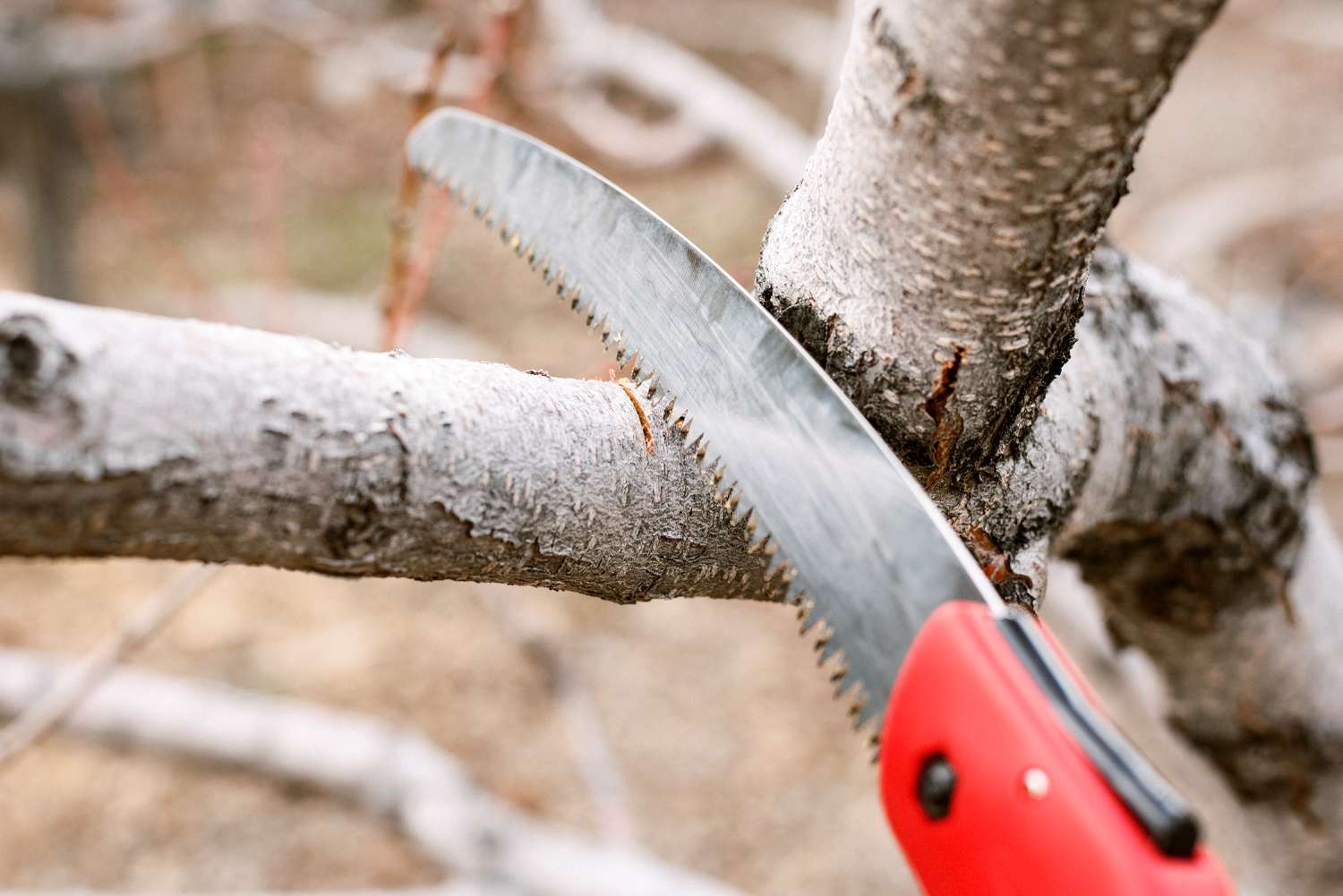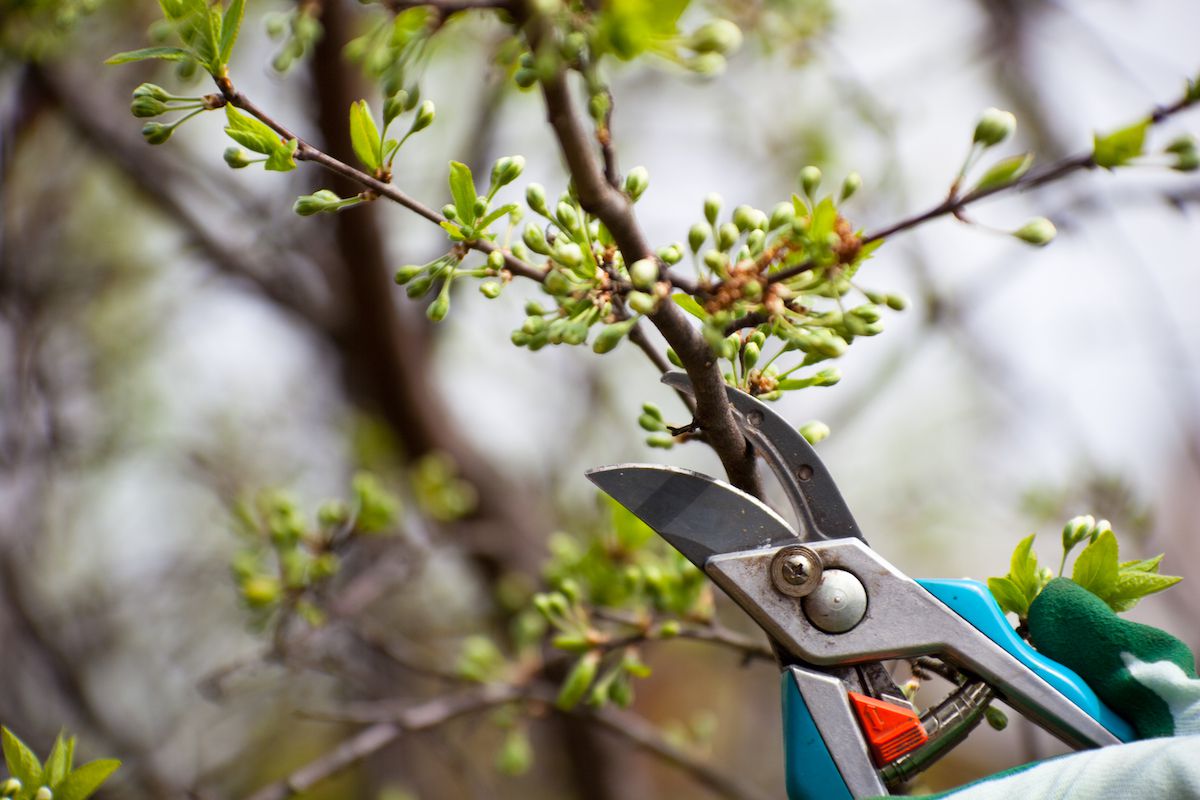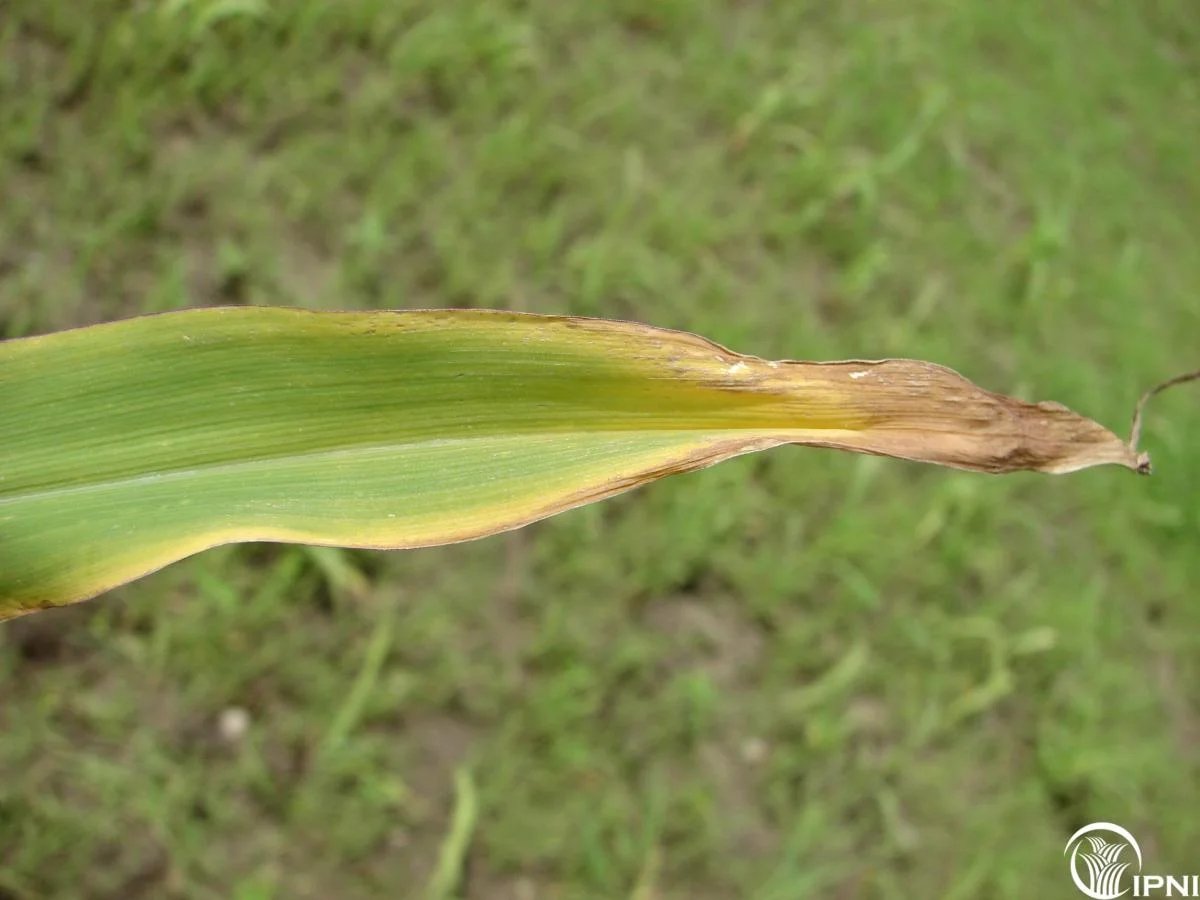Home>Gardening Basics>Tools and Equipment>What Is A Pruning Saw Used For


Tools and Equipment
What Is A Pruning Saw Used For
Published: August 21, 2023
Discover the versatility of pruning saws as essential tools and equipment for tackling tree and shrub maintenance, making your landscaping tasks easier and more efficient.
(Many of the links in this article redirect to a specific reviewed product. Your purchase of these products through affiliate links helps to generate commission for Chicagolandgardening.com, at no extra cost. Learn more)
Table of Contents
Introduction
Welcome to the world of Tools and Equipment, where we will be exploring the fascinating world of pruning saws. Whether you are a professional gardener, an arborist, or simply a passionate DIY enthusiast, pruning saws are an essential tool for anyone working with trees, shrubs, or other greenery. These saws are specifically designed to help you shape and maintain your outdoor space, ensuring healthy growth and an aesthetically pleasing environment. In this article, we will delve into the various aspects of pruning saws, including their definition, purpose, types, usage, safety tips, and maintenance.
Pruning saws have been used for centuries as an effective tool for trimming and shaping small to medium-sized branches. With the right techniques, they can help you remove unwanted branches, thin out dense foliage, and promote healthy growth. Whether you are pruning fruit trees, shaping hedges, or maintaining a beautiful garden, a pruning saw is an indispensable tool that can make your work easier and more efficient.
Throughout history, different cultures have developed their own versions of pruning saws, each tailored to suit specific needs and environmental conditions. Today, modern pruning saws come in a variety of shapes, sizes, and blade types, all designed to cater to different pruning requirements. From handheld saws with straight or curved blades, to pole saws that allow for easy reach, there is a pruning saw available for every task.
Using a pruning saw requires skill and technique, as well as a good understanding of the plant’s growth patterns and pruning requirements. Safety is also paramount when working with this tool, as the sharp blades can cause injury if not handled properly. Regular maintenance and care are crucial to ensure the longevity and effectiveness of your pruning saw, allowing it to perform at its best for years to come.
So, whether you are a seasoned professional or just starting out in the world of gardening and landscaping, this article will guide you through everything you need to know about pruning saws. Let’s dive in and explore the fascinating world of this essential tool!
Definition of a Pruning Saw
A pruning saw is a specialized hand tool that is specifically designed for cutting and pruning branches of trees, shrubs, and other plants. It features a sharp and serrated blade, usually made of high-quality steel, attached to a handle. The blade of a pruning saw is longer, thicker, and sharper compared to a regular hand saw, allowing for more efficient cutting of branches.
Pruning saws are specifically engineered to make clean and precise cuts, thereby minimizing damage to the plant and promoting healthy growth. The serrated teeth on the blade are designed to easily rip through wood fibers, ensuring smooth cuts and reducing the risk of tearing or crushing the branches.
What sets a pruning saw apart from other saws is its compact and lightweight design, making it easy to maneuver in tight spaces and reach branches at various heights. Depending on the specific model, pruning saws can have either a straight or a curved blade. Straight-blade pruning saws are ideal for cutting thicker branches, whereas curved-blade saws are better suited for lighter pruning tasks and working in tight spaces.
Unlike chainsaws or larger power tools, pruning saws do not require any external power source, making them more portable and versatile. They are commonly used in gardening, landscaping, arboriculture, and forestry to facilitate the process of pruning, which involves selectively removing certain parts of a plant to enhance its shape, health, and overall appearance.
In addition to their primary use for pruning, these saws can also be handy for other tasks such as cutting firewood, trimming bushes, and even small woodworking projects. With their sharp blades and ergonomic design, pruning saws offer a practical and efficient solution for a wide range of outdoor cutting needs.
Overall, a pruning saw is an indispensable tool for any gardener or landscaper, enabling precise and controlled pruning to promote the growth and aesthetic appeal of plants. Its specialized design and functionality make it a must-have for anyone working with trees and shrubs, whether in a residential garden or a professional setting.
Purpose of a Pruning Saw
The purpose of a pruning saw is to facilitate the process of pruning, which involves selectively removing certain parts of a plant to promote healthier growth, enhance its shape, and maintain its overall appearance.
Pruning saws are specifically designed to handle the cutting and trimming of branches, making them an essential tool for anyone involved in gardening, landscaping, and even arboriculture. They serve several important purposes:
- Removing Dead or Diseased Branches: Dead or diseased branches can negatively impact the health and vitality of a plant. By using a pruning saw to carefully remove these branches, you can prevent the spread of diseases, improve air circulation, and stimulate new growth.
- Thinning Out Overgrown Foliage: Plants that have dense foliage can become overcrowded, limiting sunlight penetration and air circulation. A pruning saw allows you to selectively thin out branches, creating a more open and balanced canopy that promotes better overall growth.
- Shaping and Controlling Growth: Pruning saws are essential for shaping the growth of plants, whether it’s training fruit trees into desired forms, creating topiaries, or maintaining uniform hedges. By selectively cutting branches, you can guide the growth patterns of plants and achieve the desired aesthetic result.
- Encouraging Flowering and Fruiting: Pruning at the appropriate time and in the proper manner can stimulate flowering and fruiting. By removing certain branches, you can redirect the plant’s energy into producing more blooms and fruits, resulting in a more bountiful harvest or a more stunning display of flowers.
- Managing Hazardous Branches: Overhanging and low-hanging branches can pose a safety risk, especially if they are near buildings or walkways. Pruning saws allow you to safely remove these hazardous branches, reducing the risk of accidents and property damage.
With their sharp blades and ergonomic design, pruning saws enable precise and controlled cutting of branches. This not only helps improve the health and appearance of plants but also promotes the safety and functionality of outdoor spaces.
Furthermore, pruning saws are versatile tools that can be used in various settings. From small residential gardens to large-scale landscaping projects, these saws provide an efficient and effective solution for cutting branches of different sizes and thicknesses.
Overall, the purpose of a pruning saw is to empower gardeners, arborists, and landscaping professionals to shape, maintain, and enhance the natural beauty of plants. By utilizing this specialized tool, you can achieve optimal plant health, controlled growth, and aesthetically pleasing outdoor spaces.
Types of Pruning Saws
Pruning saws come in various types, each designed for specific pruning needs and preferences. Understanding the different types of pruning saws can help you choose the most suitable tool for your specific gardening or landscaping task. Here are some common types of pruning saws:
- Handheld Pruning Saws: Handheld pruning saws are the most basic and commonly used type. They have a compact design with a straight or curved blade ranging from 5 to 12 inches in length. These saws are ideal for pruning small to medium-sized branches and are easy to maneuver in tight spaces. They usually feature a comfortable handle for a secure grip and come in both folding and fixed blade designs.
- Pole Pruning Saws: Pole pruning saws, also known as pole saws, are designed for cutting higher branches without the need for a ladder. They consist of a long telescopic pole with a pruning saw attached at the end. Pole saws are typically used for pruning tree branches that are out of reach from the ground. They offer extended reach and enable you to trim branches at various heights with ease.
- Bow Pruning Saws: Bow pruning saws are named after their distinctive bow-shaped frame that holds the blade in tension. The blade of a bow saw is typically longer than that of a handheld saw, ranging from 18 to 30 inches. They are designed for cutting larger branches and can even handle small tree trunks. Bow saws are especially useful for heavy-duty pruning tasks and are known for their efficient cutting power.
- Folding Pruning Saws: Folding pruning saws are compact and portable, making them a convenient option for outdoor enthusiasts and gardeners on the go. These saws feature a blade that folds into the handle, allowing for safe storage and easy transportation. Folding saws are available in various blade lengths and designs, offering versatility for different pruning requirements.
- Grafting Pruning Saws: Grafting pruning saws are specialized pruning tools used for grafting or budding trees and plants. They have a narrow and straight blade that is perfect for making precise cuts during the grafting process. Grafting saws often have fine teeth to ensure clean and smooth cuts, improving the chances of successful grafting.
Each type of pruning saw has its advantages and is suited for specific pruning tasks. Consider factors such as the size of branches you will be cutting, the height of the branches, and your personal preference in terms of handling and portability when choosing the right pruning saw for your needs. It’s also important to ensure that the saw you choose is of high quality and has sharp teeth that can easily cut through branches.
Ultimately, having the appropriate type of pruning saw for your pruning tasks will make the job easier, increase efficiency, and produce better results.
How to Use a Pruning Saw
Using a pruning saw effectively requires proper technique and understanding of the plant’s growth patterns. Here are some steps to follow when using a pruning saw:
- Assess the Branch: Start by examining the branch you intend to cut. Look for any signs of disease or damage. Determine the angle and location of the cut to ensure a clean and precise cut.
- Position Yourself and the Saw: Stand in a safe and stable position, ensuring a clear path for the branch to fall. Hold the pruning saw properly, gripping the handle firmly with both hands. Maintain a comfortable stance and position yourself to have a clear view of the cutting area.
- Make the Initial Cut: Begin by making an undercut, positioning the saw at a 45-degree angle just below the branch. Start sawing with smooth, steady strokes, using the full length of the blade. The undercut prevents the bark from tearing when the branch falls.
- Create the Final Cut: Once the undercut is complete, move to the top side of the branch and position the saw a few inches away from the undercut. Start sawing from the top, using smooth and controlled strokes. Use the weight of the saw to guide the cut and let the saw do the work, avoiding excessive pressure.
- Control the Fall of the Branch: As you approach the end of the cut, be mindful of the branch’s weight. Support the branch with your free hand or use a pole if necessary to prevent it from falling abruptly and causing damage or injury.
- Clean Up: Once the branch is safely removed, clear the area of any debris and move on to the next pruning task. Dispose of the branches properly, either by composting or disposing of them as required in your area.
Remember to exercise caution and prioritize safety throughout the pruning process. Always wear appropriate protective equipment, such as gloves and safety goggles, to protect yourself from falling debris and potential accidents.
It’s important to note that different pruning tasks may require variations in technique. For example, when pruning fruit trees, it’s essential to make precise and clean cuts at specific angles to promote healing and minimize damage. Consult reliable resources or seek advice from experts to learn the specific techniques for pruning different types of plants.
Lastly, practice is key to becoming proficient in using a pruning saw. As you gain experience, you will become more familiar with the tool and develop your own techniques and strategies for efficient and effective pruning.
Safety Tips for Pruning Saw Usage
Using a pruning saw requires careful attention to safety to prevent accidents and injuries. Follow these safety tips to ensure a safe pruning experience:
- Wear Protective Gear: Always wear appropriate protective gear, including safety goggles, gloves, and sturdy footwear. Safety goggles will protect your eyes from flying debris, while gloves provide a better grip and protect your hands from cuts and scratches.
- Maintain a Stable Stance: Stand in a stable and balanced position while using the pruning saw. Position your feet shoulder-width apart and distribute your weight evenly to maintain control and prevent falling or tripping.
- Inspect the Saw: Before every use, inspect the pruning saw for any damage or defects. Ensure that the blade is securely attached and sharp. Dull or damaged blades can cause accidents and make cutting more difficult.
- Use Proper Technique: Follow the correct cutting technique to ensure clean and controlled cuts. Avoid overexerting yourself or using excessive force, as this can lead to accidents or damage to the saw or the plant.
- Be Aware of Surroundings: Always be aware of your surroundings and any potential hazards. Check for power lines, structures, or other obstacles that may interfere with your cutting. Also, be mindful of other people or pets around you to prevent accidental injury.
- Secure the Branch: For larger branches, use a rope or bungee cord to secure the branch before cutting. This will prevent it from falling abruptly and causing damage or injury.
- Keep Both Hands on the Saw: Ensure that both hands are firmly gripping the saw at all times. This provides better control and reduces the risk of slips or accidental contact with the blade.
- Avoid Overreaching: Maintain a safe and comfortable cutting position. Avoid overreaching or stretching too far beyond your limits, as this can compromise your balance and make it difficult to control the saw.
- Store the Saw Properly: After use, store the pruning saw in a safe and secure location, away from children and pets. Keep it in a sheath or cover to protect the blade and prevent accidental contact.
- Seek Professional Help When Needed: If a pruning task requires expertise or poses a safety risk, consider hiring a professional arborist or experienced tree care specialist to ensure the job is done safely and effectively.
By following these safety tips, you can significantly reduce the risk of accidents and injuries while using a pruning saw. Remember, safety should always be your top priority when working with any tools, especially sharp ones like pruning saws.
Maintenance and Care of a Pruning Saw
Proper maintenance and care of your pruning saw are essential to ensure its longevity, performance, and safety. Here are some important tips for maintaining and caring for your pruning saw:
- Clean the Blade: After each use, it is important to clean the blade of your pruning saw to remove sap, debris, and any other residues that may have accumulated. Use a clean cloth or brush to wipe the blade, making sure to remove any rust or corrosion. Avoid using harsh chemicals or abrasive materials that could damage the blade.
- Oil the Blade: To prevent rust and promote smoother cutting, it is recommended to periodically oil the blade of your pruning saw. Apply a thin layer of lubricating oil or a specialized saw blade oil to the teeth and the surface of the blade. This will help reduce friction and extend the life of the blade.
- Tighten Loose Screws: Regularly check the screws and bolts on your pruning saw to ensure they are tight and secure. Loose screws can affect the stability and safety of the saw, so tighten them as necessary.
- Sharpen the Blade: Over time, the blade of your pruning saw may become dull. Dull blades can make cutting difficult and increase the risk of accidents. Use a fine-toothed file or a sharpening stone to sharpen the blade. Follow the manufacturer’s instructions or seek professional guidance if you are unsure of the sharpening process.
- Inspect the Handle: Regularly inspect the handle of your pruning saw for any signs of wear, cracks, or damage. If you notice any issues, it may be necessary to replace the handle. A sturdy and intact handle ensures a secure grip and comfortable use.
- Store Properly: When not in use, store your pruning saw in a dry area, away from moisture and extreme temperatures. Consider using a sheath or a cover to protect the blade from damage and to prevent accidental contact.
- Follow Manufacturer’s Guidelines: Always refer to the manufacturer’s instructions and guidelines for specific maintenance and care recommendations for your pruning saw. Different types and models may have specific requirements that should be followed to ensure optimal performance and safety.
By regularly maintaining and caring for your pruning saw, you can ensure its longevity and optimal performance. Remember, a well-maintained and sharp pruning saw will not only make your pruning tasks easier but also contribute to safe and efficient cutting.
Conclusion
Pruning saws are indispensable tools for anyone working with trees, shrubs, and other plants. With their sharp blades, ergonomic designs, and versatility, these saws enable precise and controlled pruning, promoting healthier growth and enhancing the aesthetic appeal of outdoor spaces.
In this article, we covered various aspects of pruning saws, including their definition, purpose, types, usage, safety tips, and maintenance. We explored the different types of pruning saws, such as handheld saws, pole saws, bow saws, folding saws, and grafting saws, each catering to specific pruning needs and preferences.
We also discussed the importance of using proper technique and safety precautions when using a pruning saw. By following the recommended steps and guidelines, you can ensure a safe and efficient pruning experience while minimizing the risk of accidents or injuries.
Maintenance and care are crucial to extending the life and performance of a pruning saw. Regularly cleaning, oiling, and sharpening the blade, as well as inspecting and tightening screws, are important maintenance tasks that should not be overlooked. Proper storage when not in use is also essential to protect the saw from damage and maintain its functionality.
Whether you are a professional landscaper, arborist, or a gardening enthusiast, having a reliable pruning saw in your arsenal will greatly assist you in maintaining the health and beauty of your plants. Remember to choose the right type of pruning saw for your specific needs and always prioritize safety throughout your pruning endeavors.
So, as you embark on your pruning journey, armed with your newfound knowledge of pruning saws, go forth and ensure the growth and vitality of your plants while creating a visually stunning outdoor space.









